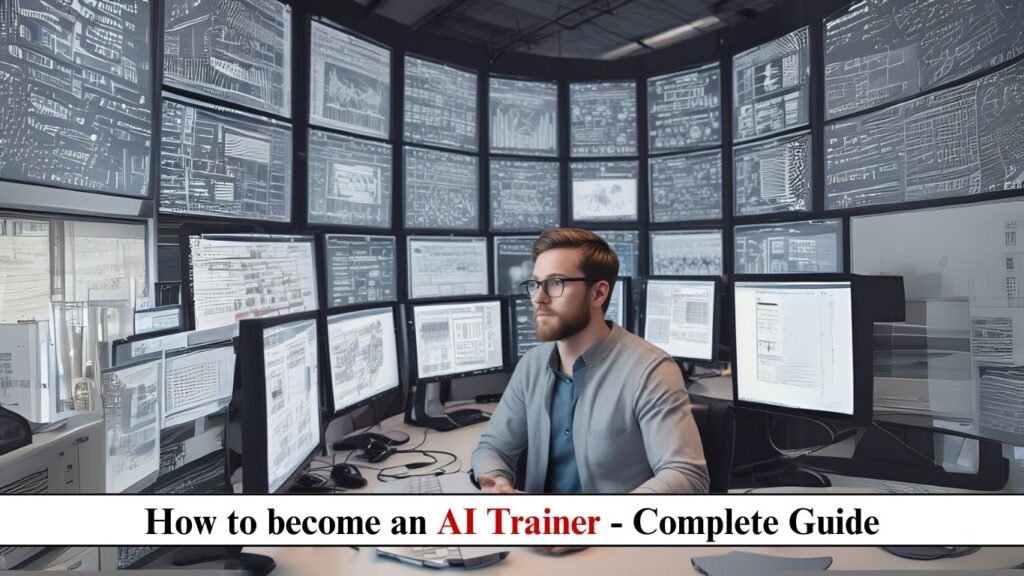
Introduction to AI Training Careers
The global AI training market is projected to reach $50 billion by 2027, creating massive demand for skilled AI Trainers who develop, fine-tune, and optimize machine learning models. These specialists serve as the “teachers” for artificial intelligence systems, ensuring models behave accurately, ethically, and effectively.
This guide covers:
- Evolution of AI training methodologies
- Salary ranges across industries
- Day-to-day responsibilities
- Required technical skills
- Step-by-step career path
- Future industry trends
Whether you’re a data scientist, educator, or tech enthusiast, this guide reveals how to build a future-proof career in AI training.
History of AI Training
Early Foundations (1950s-1990s)
- 1956: Dartmouth Workshop coins “Artificial Intelligence”
- 1980s: Expert systems require manual knowledge encoding
- 1997: IBM Deep Blue uses supervised learning for chess
Data Revolution (2000-2012)
- 2006: Amazon Mechanical Turk enables human-in-the-loop training
- 2009: ImageNet dataset spurs computer vision breakthroughs
- 2011: IBM Watson trains on medical literature for Jeopardy!
Deep Learning Era (2012-Present)
- 2014: GANs introduce adversarial training
- 2017: Transformer architecture enables transfer learning
- 2020: GPT-3 trains on 45TB of text data
- 2024: AI trainers use synthetic data for 60% of model training
AI Trainer Salary (2024)
| Experience Level | Average Salary (US) | Industry Variations |
|---|---|---|
| Entry-Level (0-2 yrs) | $65,000-$90,000 | +30% in healthcare AI |
| Mid-Career (3-5 yrs) | $90,000-$140,000 | +40% at FAANG companies |
| Senior (5+ yrs) | $140,000-$220,000 | +50% in autonomous systems |
Specialty Premiums:
- LLM fine-tuning: +$25,000
- Multimodal training: +$20,000
- Edge AI optimization: +$15,000
Roles & Responsibilities
1. Data Preparation
- Curate high-quality training datasets
- Design data augmentation pipelines
- Implement bias detection algorithms
2. Model Training
- Configure hyperparameters (learning rates, batch sizes)
- Monitor loss functions during training
- Implement transfer learning from foundation models
3. Performance Evaluation
- Develop custom metrics for domain-specific tasks
- Conduct A/B testing of model versions
- Analyze confusion matrices for classification errors
4. Ethical AI Development
- Establish RLHF (Reinforcement Learning from Human Feedback)
- Document data provenance for compliance
- Implement red teaming procedures
5. Deployment Optimization
- Quantize models for edge device deployment
- Create continuous learning pipelines
- Develop model monitoring dashboards
Required Qualifications
Technical Skills Matrix
| Category | Essential Tools/Techniques |
|---|---|
| Programming | Python (PyTorch, TensorFlow) |
| Data Tools | Pandas, SQL, Hugging Face |
| ML Ops | MLflow, Weights & Biases |
| Cloud Platforms | AWS SageMaker, Google Vertex AI |
| Specialized Knowledge | Active learning, few-shot learning |
Certification Pathway
- Foundational:
- Google AI Certification
- Microsoft Certified: AI Engineer
- Mid-Career:
- NVIDIA DLI Training Certificates
- AWS Certified Machine Learning Specialty
- Advanced:
- Stanford AI Professional Certificate
- Certified AI Trainer (emerging standard)
How to Get Started: 5-Step Roadmap
Step 1: Build Core Skills
- Complete fast.ai Practical Deep Learning
- Master data labeling tools (Label Studio, CVAT)
- Practice hyperparameter tuning on Kaggle
Step 2: Gain Practical Experience
- Entry-Level Roles:
- Data Annotator (20−20−35/hr)
- ML Research Assistant
- Alternative Paths:
- Contribute to open-source AI projects
- Freelance on AI training platforms
Step 3: Specialize
- High-Demand Niches:
- Conversational AI training
- Autonomous vehicle perception
- Medical imaging annotation
Step 4: Build Portfolio
- Showcase model training notebooks
- Document performance improvements
- Publish dataset cards on Hugging Face
Step 5: Target Employers
- AI Platforms: OpenAI, Anthropic, Cohere
- Vertical AI: Tempus (healthcare), Scale AI (autonomous systems)
- Enterprise: IBM Watson teams, Google DeepMind
Future Scope & Trends
1. Emerging Methodologies
- 2025: Self-supervised learning dominates training
- 2027: Quantum-enhanced training enters production
2. New Applications
- Personalized education tutors
- AI artist style coaching
- Emotional intelligence training
3. Market Growth
- 10x increase in synthetic data usage
- $100B spent annually on AI training by 2030
4. Career Innovations
- AI Alignment Specialists
- Multimodal Training Architects
- Synthetic Data Engineers
Conclusion: Is This Career Right For You?
✅ Ideal Candidate:
- Patience for iterative improvement
- Keen eye for data patterns
- Passion for both tech and pedagogy
🚀 Action Plan:
- Master PyTorch/TensorFlow fundamentals
- Build diverse training datasets
- Network at NeurIPS/ICML conferences
- Specialize in one AI domain
With 87% of companies now deploying AI models, skilled trainers will remain in critical demand for decades.
Want our free AI training project checklist? Comment below!
Questions about transitioning from data analysis? Ask here!













Post Comment